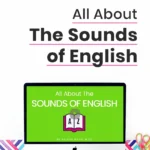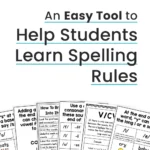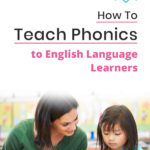Information about how the English language works is something I wish I had learned earlier in my teaching career. Unfortunately, I didn’t truly understand how English works until later on.
When I learned this information, however, it helped me better understand how to teach kids to read and spell. It also gave me so much insight into the challenges kids are facing as they learn literacy skills – what’s tricky about our language, and why kids struggle to pronounce and spell certain sounds.
In this blog post, I’ll explain why every teacher should understand how English works, and what you really need to know! All of this information is covered in much more depth in my course, Master the Rules of English Phonics.

What Is the End Goal, and How Do We Reach It?
The end goal for students is that, among many things, they become fluent readers who can comprehend different types of text. We also know that students need to be able to spell many words correctly. (Plus, learning to spell helps with reading and writing fluency.)
Fluent reading requires accurate, rapid word recognition. This means that students must read words correctly and fairly quickly. When a child is reading at an appropriate pace, it frees up the brain to focus on comprehension. On the flip side, if they’re not reading at an appropriate pace, they could struggle to make meaning from the text – which is not good, because making meaning is the whole point of reading!
The Progression of Word Learning
Another reason why every teacher should understand how English works stems from the progression of word learning. The human brain does not read words as whole units. Instead, our brains process every letter of each word as we read (Moats, 2020).
As an adult, you don’t realize that you’re processing every letter because that has become automatic. When kids are first starting to read, however, it’s not automatic.

When children first see a new word, they will decode the word sound by sound. The word isn’t going to be instantly recognized. To decode a new word, the child needs to have letter-sound knowledge. This is more than just knowing the “ABCs.” Depending on the word, may also need knowledge of concepts like long vowel teams, digraphs, prefixes, etc.
In addition to letter-sound knowledge, kids need to know how to blend those sounds. When it comes to multisyllabic words, they need to know how to “chunk” the words or divide them into syllables for easier decoding, and to help determine the sounds of the vowels.
As time goes on, a reader will likely be exposed to a new word multiple times. As they continue to decode the word over and over again, the phonemes (sounds in the word) become “bonded” (Ehri, 2005) to the letters representing those phonemes.
For instance, in the word “what,” the “wh” represents the /w/ sound. The “a” represents the short “u” /ŭ/ sound. (This is surprising since normally the “a” would represent the short “a” /ă/ sound.) And then the “t” represents the /t/ sound. Usually, it takes about 1-4 exposures for the reader to know this word instantly. (For struggling readers, it could take dozens of exposures.)
After decoding the word and multiple exposures, the word can become a sight word. The word can then be read as a whole unit. However, the reader still perceives all letters in the word. Now it’s just happening instantly, much faster. At this point, the word is stored in long-term memory.
The Role of Phonics
Because we know that this is how children learn and read words, students must understand how written letters and letter combinations correspond to the sounds in the words. This is where the role of phonics comes into play!
As teachers, we need to understand how these letter-sound correspondences work on a deep level, so that we can explain them to our students. In other words, we’ll need to teach phonics explicitly and systematically.
Being able to teach phonics isn’t as simple as just knowing the basic letter sounds. There are around 44 phonemes and 75 different graphemes (linguists disagree on the exact numbers). Here are a few more examples:
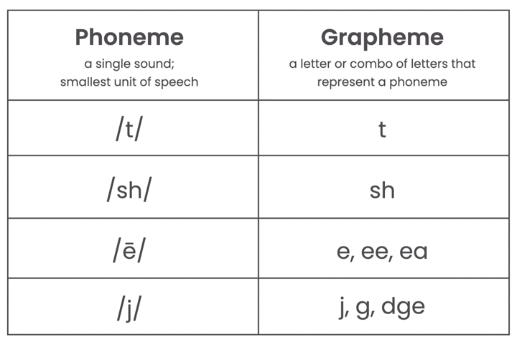
In addition, there are rules that determine how words are spelled and pronounced. For instance, English words can’t end with the letter “v,” so that determines how some words are spelled (example: “have” has a silent e at the end, not to change the sound of the vowel “a,” but so that the word doesn’t end with the letter “v”).
Plus, English is a morphophonemic system, meaning that it represents both sound and meaning. Think about the word reread – the beginning prefix “re” means to “do it again.” So not only do we have to think about the letters and sounds, but also the meaning and the way words are structured.
The better we understand how English works, the better equipped we are to teach reading and spelling to our students. Having a deep understanding of how this works is super important and valuable.
Now that you’ve learned about the role of phonics and some rules—share this knowledge with your students! My FREE Phonics Rules Posters are a perfect visual aid. Display them after teaching phonics rules so students remember and apply them when reading and spelling!
Conclusion
To learn more about the English language, its rules, and when you should be teaching them to students, check out my Master the Rules of English Phonics course! I cover these topics and so much more.
The course includes:
- 18 videos ranging in topics from “Background Knowledge for Teaching the Alphabet” to “Teaching Syllables and Syllable Division”
- A downloadable PDF for each video
- Embedded quizzes throughout to self-assess your growth
- Phonics and Syllable Rules Posters
- Consonant and Vowel Articulation Chart
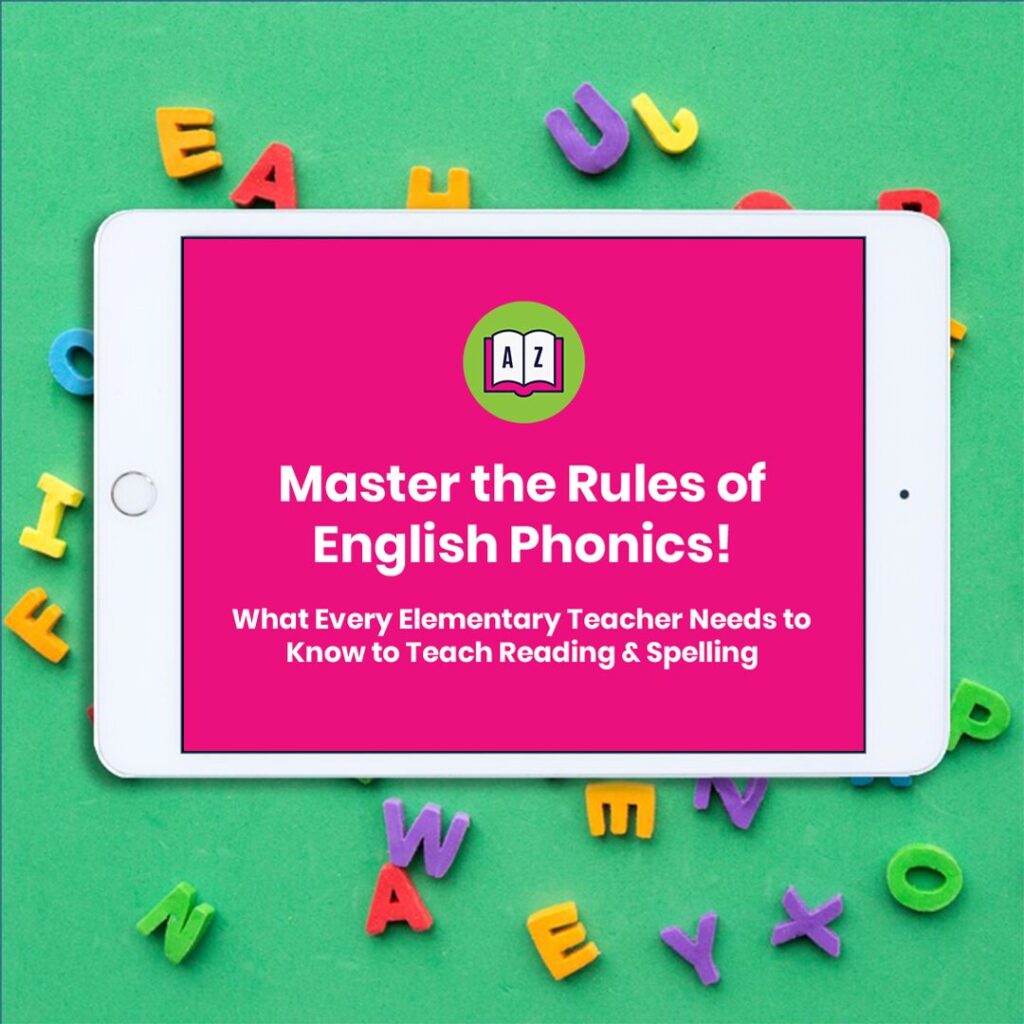
Happy teaching!

